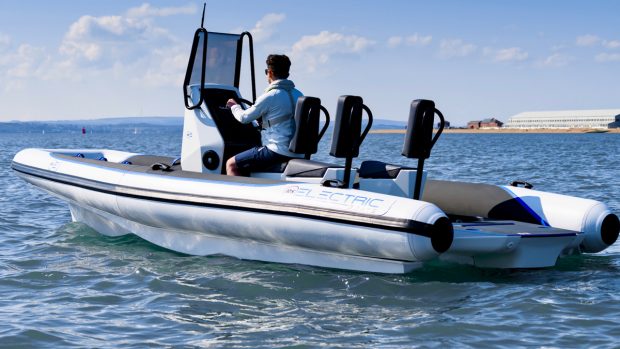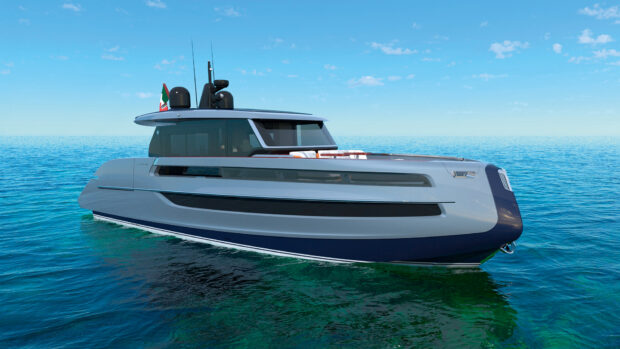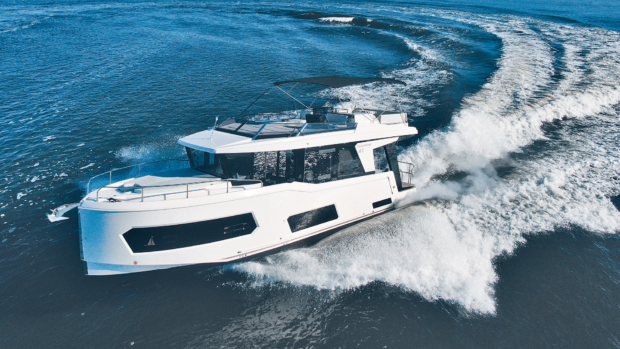Egret rounds the Cape in surprisingly good weather
Position: 55° 00.00S 67° 17.30W
Cape Horn, Chile
Scott and Mary Flanders left Gibraltar on 16 September, and we’ll be following their journey every step of the way, thanks to this unique online “blog”. For the first instalment of their diary, click here .
Egret raised anchor at 0600 local time in our overnight anchorage in Puerto Toro. With suspect electronic charting accuracy we stood vigilant watch looking for the telltale kelp patches marking uncharted rocks. By riding the flood tide we soon entered Paso Goree between Isla Navarino and Isla Lennox. This was real exciting stuff knowing shortly we would be winding our way through the Wollaston Islands then THE CAPE. 0715 we got a VHF call from the Chilean Armada (Coastguard) for the usual report. 0830 Egret entered Bahia Nassau, the most time terrible open-water stretch between the lee of Navarino and the Wollastons. Currents rip through here plus there is enough fetch to raise large, tight seas.
The seas were so light we were hoping to make the entire trip without turning on the Naiad’s. By 0915 that was a myth and we pushed the button and all motion stopped in the beam seas. By 1015 we could see a wall of fog ahead. Great. 1100 Egret entered the fog with 1/4 mile visibility. Sooo, now we are in fog with low resolution charting. Great again. Thank you Mr Radar. 1110 visibility 200 yards. 1145 Egret entered Canal Bravo. Soon after the fog lifted. Beautiful. On the port side of the canal were the wind scoured hillsides of Isla Scourfield. On the starboard side were pockets of VERY tough trees hiding behind outcrops with their treetops exactly at wind height. 1220 we were back in fog with 1/2 mile visibility. 1250 entered Paso Mar del Sur, the last pass before Isla Hornos. This was more like what we expected. With the easterly winds they blasted down the hillsides sweeping the fog along rising to 34 knots. No biggie for the Egret crew. 1:22pm we spotted the north end of Isla Hornos (Cape Horn). The infamous ‘horn’ was sticking up through the fog then disappearing, reappearing.
At 2:32pm, 1-21-07 Egret passed south of Cape Horn at 55° 00.00S, 67° 17.30W. Egret passed east to west, ‘doubling’ the Horn. We passed in sea swells but in relatively calm conditions. For those of you that wanted to hear about Egret bashing her way past the Horn let me quote the first American powerboat circumnavigators, Bruce and Joan Kessler on Zopilote: “Anyone who has been in rough water doesn’t wish for rough water”. Egret has seen rough water. We feel very fortunate NOT to have been in rough water. Egret has travelled 7192.14 nautical miles from Gibraltar for this privilege.
The history here is incredible. Most of it is tragic. Looking at a shipwreck chart there are 78 known shipwrecks, many are unreported, within a very short distance from our current position. Modern weather forecasting and modern boats make Cape Horn today much, much less of a danger. The weather is still here and occasionally boats do get caught out and do pay the price. What Egret did today was not dangerous. We were cautious, followed the rules and were LUCKY with weather. If the weather were bad we would not have gone today.
Thank you so much for following the Egret crew to her farthest point south in her travels? perhaps. More to follow.
The Egret crew: Mary and Scott Flanders, Master Angler Steve Lawrence, and PAE VP Jim Lieshman
Picture: Cape Horn from the south









